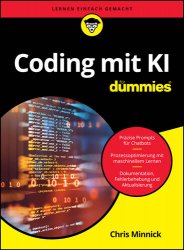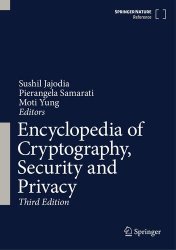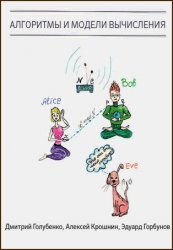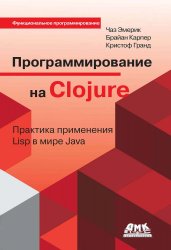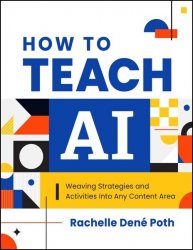 Название: How to Teach AI: Weaving Strategies and Activities into Any Content Area
Название: How to Teach AI: Weaving Strategies and Activities into Any Content AreaАвтор: Rachelle Dene Poth
Издательство: International Society for Technology in Education
Год: 2024
Страниц: 193
Язык: английский
Формат: epub (true)
Размер: 21.5 MB
Get practical tools and strategies for teaching AI across the K-12 curriculum with this accessible guide.
As AI continues to transform our world, educators have a responsibility to stay current with the changes, and ensure that students have the necessary knowledge and skills to succeed in the future. Written by an educator who is currently teaching on this topic, How to Teach AI shares practical strategies and tools based on what good practice looks like in the classroom right now. Readers will build confidence in integrating AI into their curriculum so they can effectively prepare students for their careers.
In the chapters that follow, you will find accessible and practical tools to help you teach about and leverage the power of AI in your instructional practice. We will discuss the foundations of AI, such as algorithms, machine learning, natural language processing, neural networks, and generative AI (including the ubiquitous ChatGPT), and I’ll provide examples of how these technologies are being implemented in various industries, as well as their impact on education. The book will also address the ethical and social implications of AI and offer inspiration and resources for how to teach these emerging technologies in the classroom.
Like all computer programs, AI is built on algorithms. An algorithm is a set of instructions that a computer has been programmed to follow in order to accomplish a task. The instructions take the form of lines of code. Simple algorithms perform simple jobs; more difficult tasks require more complicated algorithms, and both can be combined to perform extremely complex tasks. The algorithms underlying AI provide instructions that enable it to analyze data, check for spelling and grammar mistakes in text, recognize speech, and much more.
Machine Learning (ML) is a component of Artificial Intelligence in which computer systems enhance their proficiency in tasks by analyzing data and patterns. Machine Learning relies on algorithms that have been trained on data, such as statistical models. These specialized algorithms then respond to this data, seek patterns in it, and learn from it so they can better analyze new, similar information. As an AI program’s knowledge base grows, it will continue to improve on past iterations (as it has been programmed to do), which, in turn, will expand the realm of possibilities for what it can do.
Developed by OpenAI, ChatGPT is an upgrade from GPT-3 (Generative Pre-Trained Transformer 3), a trained language model that uses Deep Learning and can simulate human conversation. Through the use of a prompt (think of this like a writing prompt you’d give your students), you can ask it anything ranging from providing a description of something with examples to creating a lesson plan or rubric for your class to generating project ideas to providing relevant definitions or detailed descriptions—and so much more.
Within seconds, ChatGPT analyzes the prompt you entered and generates a response by using algorithms and sorting through the massive data that it can access. The use of deep learning algorithms enables it to understand the context and meaning of the prompt, which it then uses to create its response in a conversational manner. ChatGPT can also learn from your interactions with it to adapt and improve its responses. Does this mean that the answer is always perfect and exactly what you’re looking for? Not necessarily. Sometimes you have to tweak it or ask it to regenerate a response, which is why we need to focus on prompt engineering (Chapter 4 offers ideas to help you craft effective prompts). It sounds great because of all of the ways that you can use ChatGPT to save time, gather resources, analyze text, and more (Chapter 3 elaborates with even more benefits); however, generative AI tools like ChatGPT bring with them concerns surrounding ethical use, information accuracy, and academic integrity (more on this in Chapter 2). The technology has been advancing rapidly, especially with the capabilities of GPT-4 Turbo, which has additional generative capabilities and access to more current data.
ChatGPT is not the only generative AI tool available. As a class, generative AI (or GenAI as it is often called) tools have been trained on massive amounts of data to recognize patterns and relationships among words, images, sounds, and even code. They can create new content, learn patterns from existing data, and then use it to generate new and unique output, such as text for news articles, blog posts, and even creative writing; images in the style of photographs, paintings, and cartoons; realistic, human-sounding voices for audiobooks, music, and podcasts; and video for movies, TV shows, and ads. Its uses in the world and in education are increasing rapidly, as you’ll learn in Chapter 4, which dives deeper into working with ChatGPT, DALL•E, and other GenAI tools.
The book includes:
• Ideas for using generative AI in the classroom and tips for writing effective prompts.
• Activity ideas across content areas, including computer science, economics, literature, music and more.
• Time-saving ideas for teachers, and study aids for students to explore.
• AI-powered tool recommendations for teachers.
• Questions for reflection in every chapter.
With examples from educators in the field, and a variety of resources to apply in the classroom, this book helps educators become comfortable with this important topic and create meaningful learning experiences for their students.
Скачать How to Teach AI: Weaving Strategies and Activities into Any Content Area
[related-news] [/related-news]
Комментарии 0
Комментариев пока нет. Стань первым!



